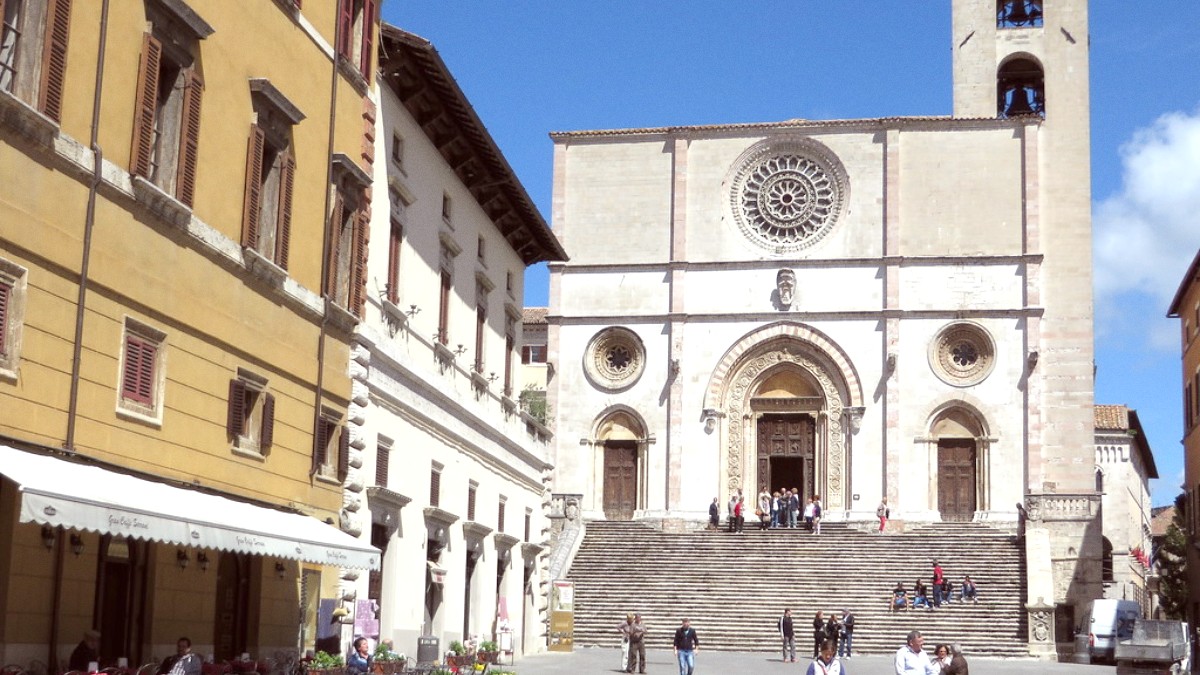
Umbria And Le Marche, Italy
Visitors discover a harmonious blend of profound heritage and present-day tranquility. Todi presents an escape from the rush of modern life, inviting visitors to slow down, absorb the atmosphere, and connect with a region celebrated for its genuine character. This guide details uncovering the secrets of Todi, making your visit memorable. It prepares you to experience the town’s unique charm and the warm welcome of its people. Prepare to walk through history, savor local flavors, and find peace in one of Italy's most appealing corners.
Todi's history stretches back over 2,700 years, a testament to its enduring appeal and strategic importance. It began its story in the 8th century BC, founded by the Umbrians, one of Italy's earliest Italic tribes. The town’s location, high above the Tiber River, presented a natural defensive advantage, making it a desirable settlement from early times.
The Etruscans later settled the town, renaming it "Tutere." They left their mark on Todi’s early development. In 217 BC, Todi became a Roman municipium, known as "Tuder," its strategic position continuing as important for Roman control. The Middle Ages saw Todi flourish as an independent comune, its golden age. The town became a powerful and prosperous city-state, constructing many of its most famous civic and religious buildings.
Etruscan artifacts and remnants of their walls still remain, forming the oldest of Todi's unique triple ring of defensive walls. Roman influence is visible in architectural styles and some of the town's current street layout. The second layer of Todi’s defensive walls dates from this Roman period.
The imposing palaces that dominate Piazza del Popolo – the Palazzo del Popolo, Palazzo del Capitano, and Palazzo dei Priori – demonstrate the architectural and political might of this era. The Duomo, Todi's cathedral, also saw significant development. The medieval period also contributed the third, outermost ring of walls, finishing Todi’s layered defensive history.
Umbrian foundation of the town.
Town settlement, renaming to "Tutere," and early urban planning.
Todi becomes a Roman municipium, "Tuder."
Todi's Golden Age as an independent Comune.
Integration into the Papal States until Italian unification.
Todi presents a captivating snapshot of Umbrian life, combining historical grandeur with an unhurried pace. At its heart lies the Piazza del Popolo, a square often recognized as one of Italy's most beautiful medieval town squares. Three magnificent palaces, the Palazzo del Popolo, Palazzo del Capitano, and Palazzo dei Priori, frame this central hub, demonstrating medieval civic architecture.
The Duomo, with its striking rose window, graces the piazza, inviting quiet reflection. Just outside the ancient walls, the Tempio di Santa Maria della Consolazione is a masterpiece of Renaissance architecture. Its harmonious, symmetrical dome commands attention, a testament to the period's architectural ideals.
From the ruins of the Rocca, a 14th-century fortress now a public park, visitors gain wide, sweeping views of the Tiber Valley and the expansive Umbrian countryside. This view captures the region’s rolling hills, olive groves, and vineyards, an iconic sight of Todi's natural setting.
Todi presents a genuine slice of Italian life. It is a place where history and daily routine merge, presenting a serene, enriching travel experience. It is a destination captivating with its beauty, history, and understated charm, leaving a lasting impression on all who visit.
Life in Todi moves with gentle rhythm. Cobblestone streets wind through the historic center, uncovering artisan shops, family-run trattorias, and quiet corners. The town’s culinary scene reflects Umbria’s "cucina povera," focusing on simple, high-quality ingredients like local olive oil, black truffles, and cured meats.
Todi provides a peaceful alternative to Italy's larger, more crowded cities. Its compact size means you can explore much of it on foot, though comfortable shoes come recommended for the hilly terrain. The town's funicular presents convenient access from the lower parking areas to the historic center.
Experience the town's unhurried pace and welcoming local atmosphere.
Savor authentic Umbrian dishes with local ingredients.
Admire sweeping views of the Umbrian countryside.
You can savor dishes like Strangozzi al tartufo nero or Porchetta from a market stall. Todi transforms in late summer during the Todi Festival, an international arts event that brings music, theater, and art to its ancient stages.
Over 2,700 years of continuous settlement, from Umbrian to Roman to Medieval.
Elevation of around 400 meters (1,312 feet) above sea level.
The town's central square, a medieval architectural marvel.
Traditional Umbrian crafts, including ceramics, textiles, and woodworking, are found in local workshops.
The region is renowned for its high-quality extra virgin olive oil, often available for tasting and purchase directly from producers.
Umbria's vineyards produce excellent wines, including Grechetto and Sagrantino, with many local wineries offering tours and tastings.